TAMIL ORATORY AND THE DRAVIDIAN AESTHETIC
CULTURES OF HISTORY
CULTURES OF HISTORY
NICHOLAS DIRKS, SERIES EDITOR
The death of history, reported at the end of the twentieth century, was clearly premature. It has become a hotly contested battleground in struggles over identity, citizenship, and claims of recognition and rights. Each new national history proclaims itself as ancient and universal, while the contingent character of its focus raises questions about the universality and objectivity of any historical tradition. Globalization and the American hegemony have created cultural, social, local, and national backlashes. Cultures of History is a new series of books that investigates the forms, understandings, genres, and histories of history, taking history as the primary text of modern life and the foundational basis for state, society, and nation.
Shail Mayaram, Against History, Against State: Counterperspectives from the Margins
Tapati Guha-Thakurta, Monuments, Objects, Histories: Institutions of Art in Colonial and Postcolonial India
Charles Hirschkind, The Ethical Soundscape: Cassette Sermons and Islamic Counterpublics
Ahmad H. Sadi and Lila Abu-Lughod, editors, Nakba: Palestine, 1948, and the Claims of Memory
Prachi Deshpande, Creative Pasts: Historical Memory and Identity in Western India, 17001960
Todd Presner, Mobile Modernity: Germans, Jews, Trains
Laura Bear, Lines of the Nation: Indian Railway Workers, Bureaucracy, and the Intimate Historical Self
Vazira Fazila-Yacoobali Zamindar, The Long Partition and the Making of Modern South Asia: Refugees, Boundaries, Histories
TAMIL ORATORY
and the
DRAVIDIAN AESTHETIC
 DEMOCRATIC PRACTICE IN SOUTH INDIA
DEMOCRATIC PRACTICE IN SOUTH INDIA
Bernard Bate
COLUMBIA UNIVERSITY PRESS
NEW YORK

Columbia University Press
cup.columbia.edu
Publishers Since 1893
New York Chichester, West Sussex
Copyright 2009 Columbia University Press
All rights reserved
E-ISBN 978-0-231-51940-3
Library of Congress Cataloging-in-Publication Data
Bate, Bernard.
Tamil oratory and the Dravidian aesthetic : democratic
practice in south India / Bernard Bate.
p. cm.
Includes bibliographical references and index.
ISBN 978-0-231-14756-9 (cloth : alk. paper)
ISBN 978-0-231-51940-3 (ebook)
1. Folk literature, TamilIndiaMadurai. 2. Epic poetry,
TamilIndiaMadurai. 3. Speeches, addresses, etc., Tamil
IndiaMadurai. 4. Tamil languageIndiaMaduraiRhetoric.
5. Politics and cultureIndiaMadurai. 6. Language and culture
IndiaMadurai. 7. Madurai (India)Politics and government.
1. Title.
PL4758.85.M29B38 2009
398.2'0494811dc22 2009020689
A Columbia University Press E-book.
CUP would be pleased to hear about your reading experience with this e-book at .
In memory of N. G. M. Kavitha, navalar

CONTENTS
| Political map of India |
| Map of central Madurai |
| Devasigamani Achariya |
| Classic midsagittal view of the upper vocal tract |
| Spatial axes of distinction in a public meeting |
| DMK serial tower, 1994 |
| Cutout of Mu. Ka. Stalin, 1995 |
| Posters of Mu. Ka. Stalin, 1995 |
| Poppaiyans Heart, 1995 |
| Jayalalitha as Andal |
| Jayalalitha advertisement, 1994 |
| Mural at JJ Tidal, 1994 |
| Mural along Workshop Road, 1994 |
Mural on the back wall of the Vinayakar
Temple, 1995 |
| Tamil Variations in Radio Programs |
| Thiru. Vi. Ka.s Epistemological Hierarchy |
The tradition of all the dead generations weighs like a nightmare on the brain of the living. And just when they seem engaged in revolutionizing themselves and things, in creating something that has never yet existed, precisely in such periods of revolutionary crisis they anxiously conjure up the spirits of the past to their service and borrow from them names, battle cries, and costumes in order to present the new scene of world history in this time-honored disguise and this borrowed language.
KARL MARX, THE EIGHTEENTH BRUMAIRE OF LOUIS BONAPARTE, 1852
THE NEWNESS OF MADURAI
India is very old. Geologists tell us that the entire Indian subcontinent was a part of southern Africa some one hundred fifty million years ago. It crossed what is now the Indian Ocean and smashed into Asia twenty to forty million years ago raising up the Himalayan Mountains in the process. They are still rising today.
Ordinary people in Tamilnadu have different senses of this antiquity. For instance, surrounding the ancient city of Madurai in the southernmost part of the peninsula are granite hills whose stone first formed in Africa. People say they are the petrified remains of great demonselephant, snake, cowwhom the Lord Siva defeated in the time of the puranas, the old stories. On some of those hills are caves, stone beds, ancient writings, and beautiful images of Mahavira, the founder of Jainism, carved twelve hundred years ago by ascetics waiting to die. (There are no Jains there now.) Construction sites for Madurais new big buildings with their deep foundations regularly reveal heartbreaking layers of human effort, suggesting that there were many others here long before. Everywhere one looks, it seems, are traces of people long gone, erased by people gone almost as long.
It is that sense of layers, of depths, of history laminated over history melded with stories, riddles, proverbs, and stone that permeate ones sense of the place. Reading an ancient Tamil text has this same quality: an anthology of poems will date perhaps to the firstthird century C.E., the period of the Tamil , or academies. A commentators exegesis composed six centuries later will appear just below the original verse. Another commentary written in the fourteenth century will illuminate the first commentary for his contemporaries. And nineteenth-or twentieth-century Tamil prose frames this archaeology, all of it bound into that most modern of objects, a printed book. History laminated over history, readings of readings of readings all culminating in an ancient text bound in a modern form whose very presence indicates to us just how old Tamil is, just how long people have been writing and speaking in Tamil.

India, Tamilnadu, and major metropolitan cities
At the same time, a great deal of what we seeor hearas old in Tamilnadu, and India more generally, is really very new. To put it even more pointedly, a great deal of the very new things in India have that feel of very old things layered with history. As it turns out, these very new things appear to make claims regarding the essences of the Tamil people. For instance, perhaps the very first thing a student will read of Madurai, or what a visitor or pilgrim will learn in a tourist map and guide, is that the city is centered upon the great temple of the Goddess Meenakshi, Lord Sivas consort, almost universally said to be Madurais queen. Everything about the city confirms this basic fact: streets appear to radiate out from the temple in concentric circles. And the high point of any year is the annual festival in the Tamil month of Chittirai (April/May), in which the goddess reenacts her Conquering the Lords of the Eight Directions (
Next page
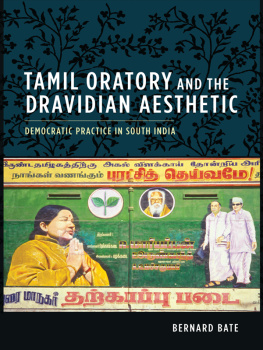


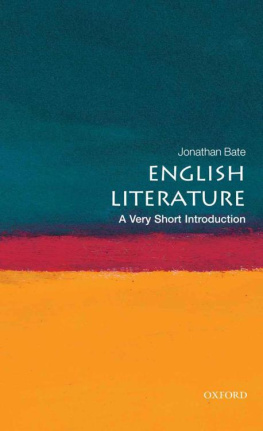

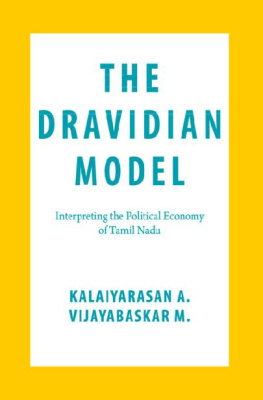
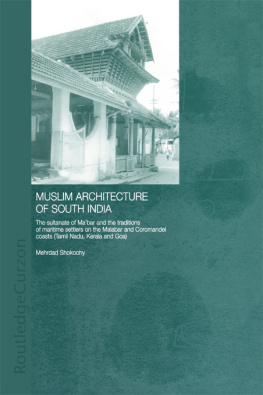
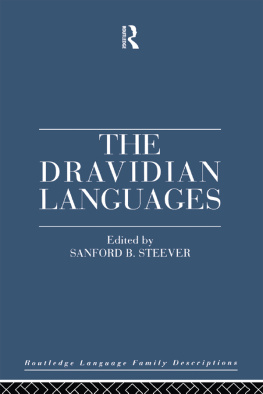
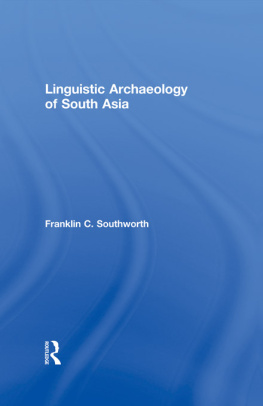
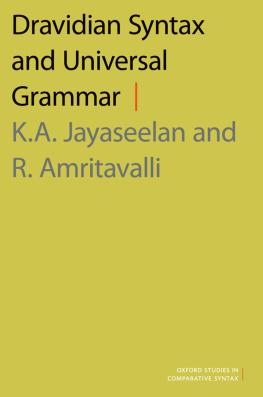
 DEMOCRATIC PRACTICE IN SOUTH INDIA
DEMOCRATIC PRACTICE IN SOUTH INDIA


